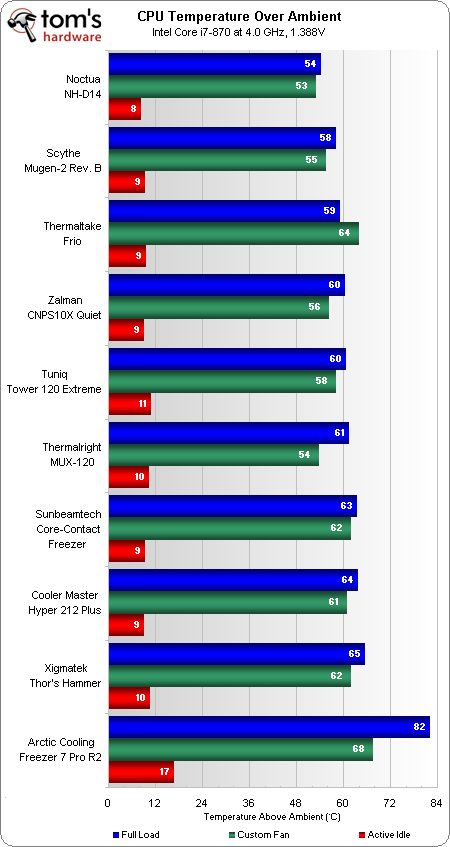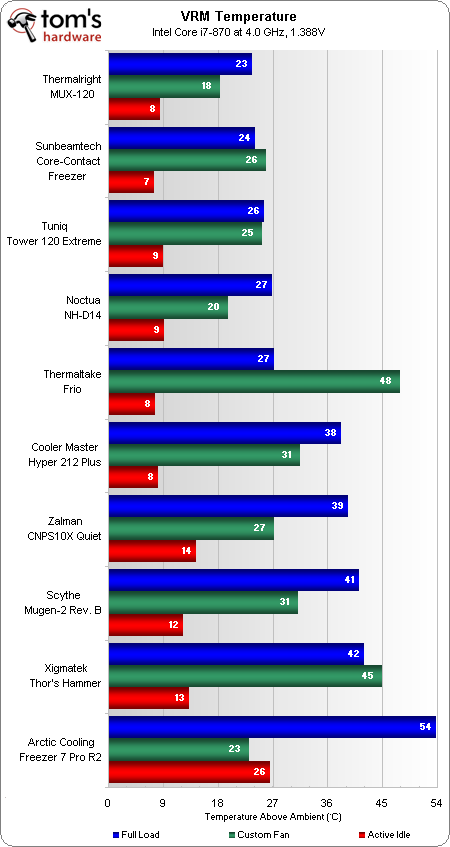Overclocking On Air: 10 LGA 1156-Compatible Performance Coolers
Thermal Testing Results
Why you can trust Tom's Hardware
We tested each cooler with it stock fan(s), and then retested with our own choice of a 2,500 RPM fan to find out how well each heat sink worked at similar noise levels and airflow. The chart below is organized by stock fan performance.
Noctua and Scythe had the largest sinks, so it’s no big surprise that these coolers offered the best performance with the dual-fan NH-14 in the lead. Yet there is a surprise near the middle of this chart: Thermalright’s thin MUX-120 takes second place when our custom fan is used. Middling performance for the stock configuration can be attributed to a low-speed stock fan.
Note that Arctic Cooling’s Freezer 7 Pro Rev.2 reaches an astounding 82 degrees Celsius over-ambient temperature with our highly overclocked processor. This is not a typo! We were forced to drop the lab temperature to a chilly 11 degrees Celsius to complete its evaluation.
Also worth mentioning is that the top four contenders in today’s comparison did not use direct-contact heat pipes, but instead relied upon copper heat spreaders to interface the integrated heat spreader of our CPU. If we instead look at the results obtained using our own fan, Thermaltake’s Frio drops out while Thermalright’s MUX-120 drops in and we’re still left with the top four performers lacking this so-called “feature.”
A fan that hangs below the cooler and an open center allowed Thermalright’s MUX-120 to provide excellent airflow over our system’s voltage regulator. Two peculiarities in this test are that the Thermaltake Frio cools the VRM poorly with our single fan, while Arctic Cooling’s Freezer 7 Pro Rev.2 excels with the replacement fan. Arctic Cooling’s dramatically improved performance is explained by how the edge of the replacement fan rested on top of the motherboard, producing interesting results from an otherwise impractical configuration.
Get Tom's Hardware's best news and in-depth reviews, straight to your inbox.


